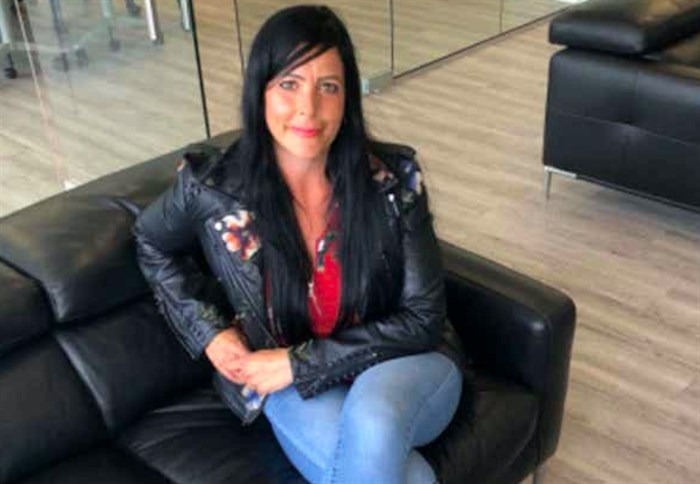Inflation driving people out of their homes, on to Kelowna streets

The fact that about 150 people are sleeping rough in Kelowna these days is no surprise to Journey Home or other agencies in the city focused on helping the homeless.
With the high rate of inflation this year and skyrocketing housing costs, it was clear early on that more people would be driven out of their homes, said the executive director of the Central Okanagan Journey Home Society.
“(Kelowna) certainly has pricing nuances impacting this that look a lot different from other communities,” Gauthier said. “In a general context, in Canada, for every 1% increase in inflation, we see a 2% prevalence in the rise in homelessness. I suspect Kelowna is even more impacted than that Canadian average.”
Bylaw and police officers survey much of the city each morning to identify, by name, how many people are sleeping outdoors.
Today, Nov. 1, they found 151 people sleeping rough, including 78 in the city-run homeless campsite that was built for 50 people.
Over the past five days, the number of people sleeping outdoors has ranged from 142 to 164, Gauthier said.
That doesn’t include people sleeping in their cars.
The trajectory of the growing number of homeless people in the city was clear last spring.
“Back in May, we presented data to the City of Kelowna and B.C. Housing to say, by Oct. 15, here’s what we anticipate the shelter needs to look like in Kelowna and it was spot on,” Gauthier said. “In May, we said we need 516 new units of supportive housing in the next five years to buck this trend and get to where we need to be as a community. We’re six months down the road and there are no shovels in the ground.”
READ MORE: Kelowna's homeless population expected to double by 2026
Supportive housing is only part of the solution since many ending up on the streets are pushed out of their homes and not able to afford Kelowna’s high rents.
“Most of our inflow into homelessness in the last year has very little to do with mental health or addictions or things like that,” Gauthier said. “It’s family breakup and pure affordability.”
She cited the case of one man whose job was tied to his housing. When he lost his job, he lost his home and could not afford to rent. In another case, a spouse who was the income earner, died, leaving the other not able to afford rent on their disability pension.
“There was a family in the summertime – a husband, wife and children – who ended up homeless for affordability reasons,” Gauthier said. “The landlord kicked them out under the guise of renovation etc., then doubled the rent so, just because of the nature of shelter capacity, the mom and kids had to go into the women’s shelter and the dad had to go into the overnight sheltering space (campsite) – it’s just the heartbreak of families having to be split up in what’s already a dire circumstance.”
That family had to move to another community to live with family.
The dire shortage of housing is compounded this year by an equally dire shortage of people willing to work in the field.
“Most of the logistics are in place in terms of identifying spaces and food sources, transportation and security and all other parts that have to come into the picture to make this work,” Gauthier said. “We’re heavily focused, right now, on trying to identify operator capacity in the community.
“It’s a challenge no different to many other industries that can’t get enough staff right now. Then, you add on the fact that the nature of the work is generally historically underpaid for the value of work and what it takes to do the work. There’s a level of vicarious trauma that happens in our sector that’s different to other businesses and industries that also layers on the challenge of high turnover and workforce capacity issues.”
READ MORE: Grim winter ahead for those sleeping rough in Kelowna
Kelowna is the fifth most expensive city for rent in Canada with a one-bedroom apartment averaging $1,900 a month, an impossibility for those on low or fixed incomes.
“Forty to fifty per cent of people experiencing homelessness in any community in Canada have an acquired brain injury so we need to recognize that hidden disabilities really play a role in people’s financial viability going forward in terms of what they could ever afford in rent,” Gauthier said. “Someone on fixed benefits in our community, even with a rent supplement, can’t afford a studio suite here just on pure pricing.”
That includes a growing number of seniors becoming homeless because they can't survive on their pensions.
While there’s plenty of market rental apartments being built or planned, that’s not going to help the working poor or those on fixed incomes.
Gauthier is lobbying the newly elected city council looking for ways to get housing built that people can afford using 30% of their gross income – maybe as low as $300 a month.
“We need a lot more of that in our community,” she said. “They need to be locked in as affordable models, for 10-15-20 plus years. Otherwise, what’s deemed affordable is just going to be squeezing in middle class incomes that are already under pressure and we’re already seeing a lot of middle-class income folks sleeping in vehicles and RVs and having to leave the city."
To contact a reporter for this story, email Rob Munro or call 250-808-0143 or email the editor. You can also submit photos, videos or news tips to the newsroom and be entered to win a monthly prize draw.
We welcome your comments and opinions on our stories but play nice. We won't censor or delete comments unless they contain off-topic statements or links, unnecessary vulgarity, false facts, spam or obviously fake profiles. If you have any concerns about what you see in comments, email the editor in the link above.



